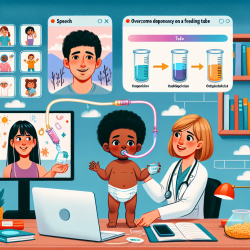As practitioners dedicated to the well-being and development of children, it is crucial to stay updated with the latest research findings. A recent study titled "Prevalence and cumulative incidence of autism spectrum disorders and the patterns of co-occurring neurodevelopmental disorders in a total population sample of 5-year-old children" provides valuable insights that can significantly enhance our understanding and intervention strategies for Autism Spectrum Disorder (ASD).
This study, conducted in Hirosaki, Japan, utilized a comprehensive, cross-sectional sequential design to estimate the prevalence and cumulative incidence of ASD among 5-year-old children. The results revealed an adjusted ASD prevalence of 3.22%, with a male-to-female ratio of 2.2:1. Notably, 88.5% of children diagnosed with ASD had at least one co-occurring neurodevelopmental disorder (NDD), such as ADHD, Developmental Coordination Disorder (DCD), or Intellectual Disability (ID).
Key Findings and Their Implications
The study's findings highlight several important points for practitioners:
- Stable Incidence Rates: The study found no significant increase in the cumulative incidence of ASD over the four-year period. This suggests that the observed rise in ASD prevalence is likely due to better diagnostic practices and broader diagnostic criteria rather than an actual increase in ASD cases.
- High Rates of Co-occurring NDDs: The majority of children with ASD also had other NDDs, emphasizing the need for comprehensive assessments that go beyond ASD-specific symptoms. Practitioners should be vigilant in identifying and addressing these co-occurring conditions to provide holistic care.
- Importance of Early and Continuous Screening: Approximately 30% of children diagnosed with ASD had not been identified as developmentally challenged before the study. This underscores the importance of continuous developmental check-ups beyond the early years to ensure timely identification and intervention.
Implementing These Findings in Practice
To enhance your practice based on these findings, consider the following strategies:
- Adopt Comprehensive Assessment Tools: Utilize a range of validated screening tools to assess various developmental domains, including social-emotional behavior, cognitive skills, and motor functions. This will help identify not only ASD but also co-occurring NDDs.
- Implement Regular Follow-ups: Establish a protocol for regular developmental check-ups, especially for children who have screened positive for any developmental concerns. Continuous monitoring will ensure early identification of emerging issues.
- Collaborate with Multidisciplinary Teams: Work closely with psychologists, occupational therapists, and pediatricians to provide a well-rounded assessment and intervention plan. A multidisciplinary approach will ensure that all aspects of a child's development are addressed.
- Educate and Involve Caregivers: Provide training and resources to caregivers to help them understand the importance of comprehensive assessments and continuous monitoring. Informed caregivers are more likely to seek timely evaluations and interventions for their children.
Incorporating these strategies into your practice will not only improve the accuracy of ASD diagnoses but also ensure that children receive the comprehensive care they need. By staying informed and adapting to new research findings, we can make data-driven decisions that lead to better outcomes for children with ASD.
To read the original research paper, please follow this link: Prevalence and cumulative incidence of autism spectrum disorders and the patterns of co-occurring neurodevelopmental disorders in a total population sample of 5-year-old children.










